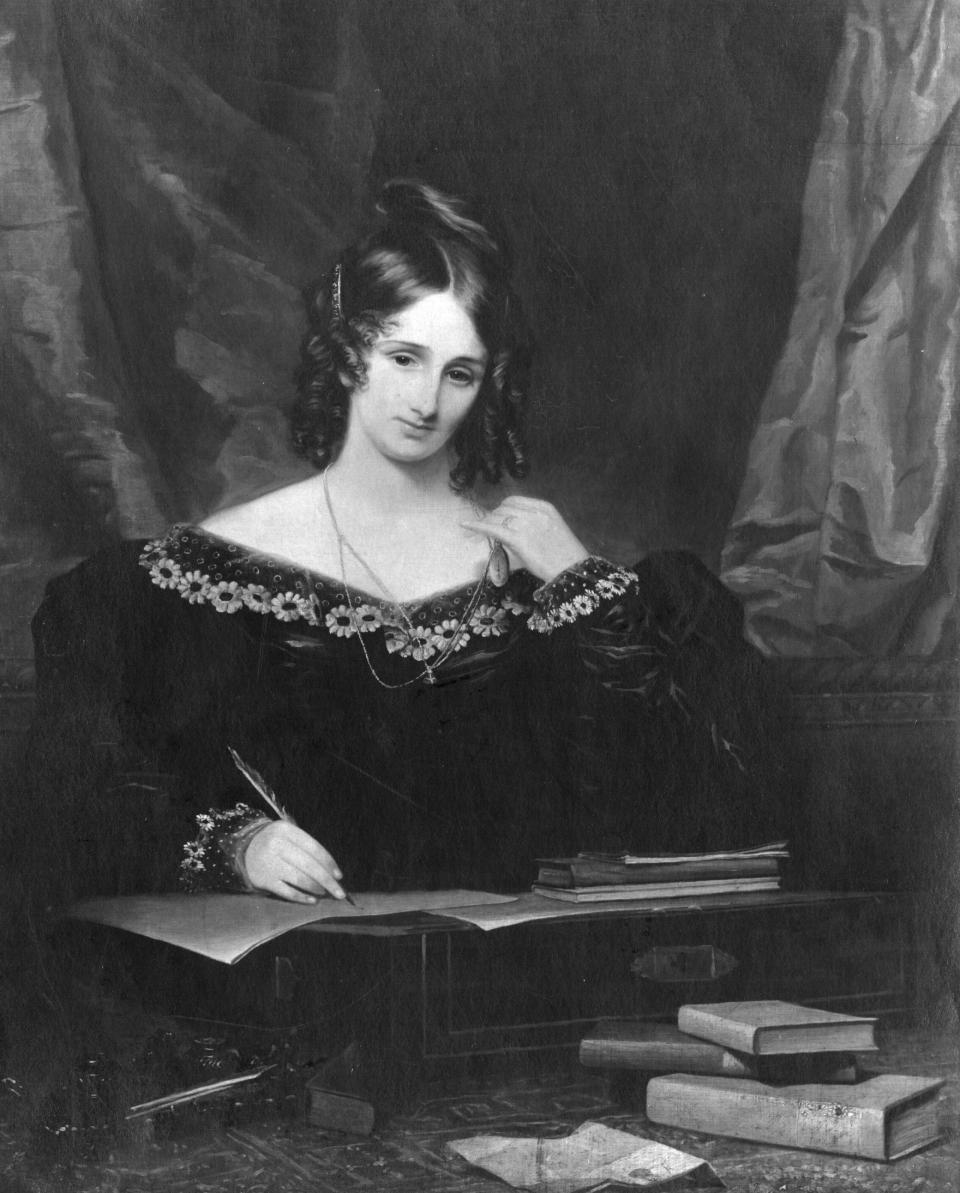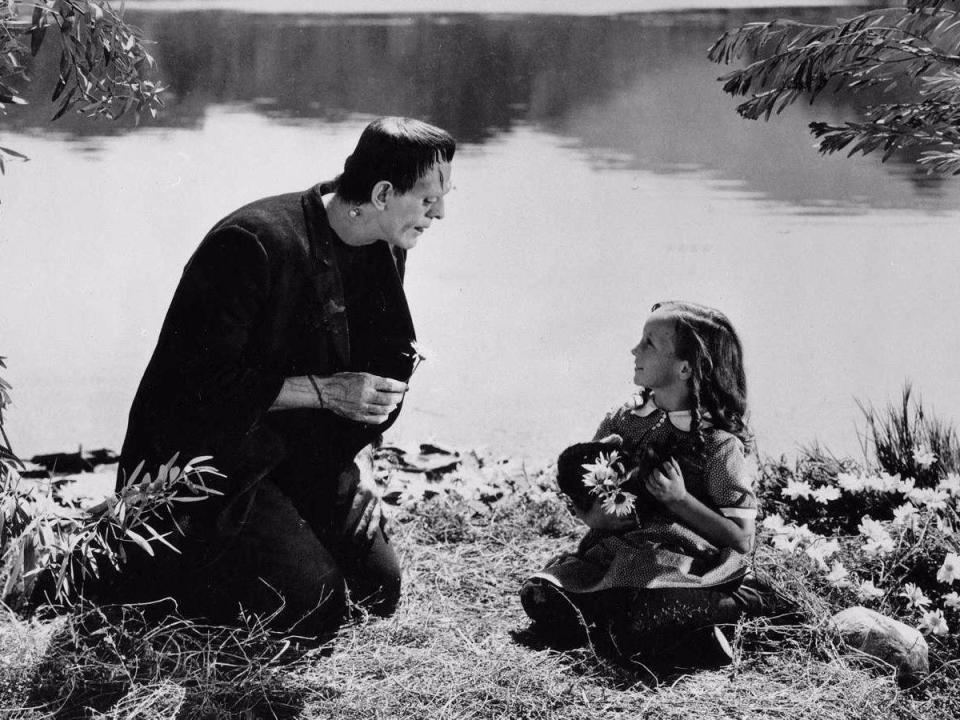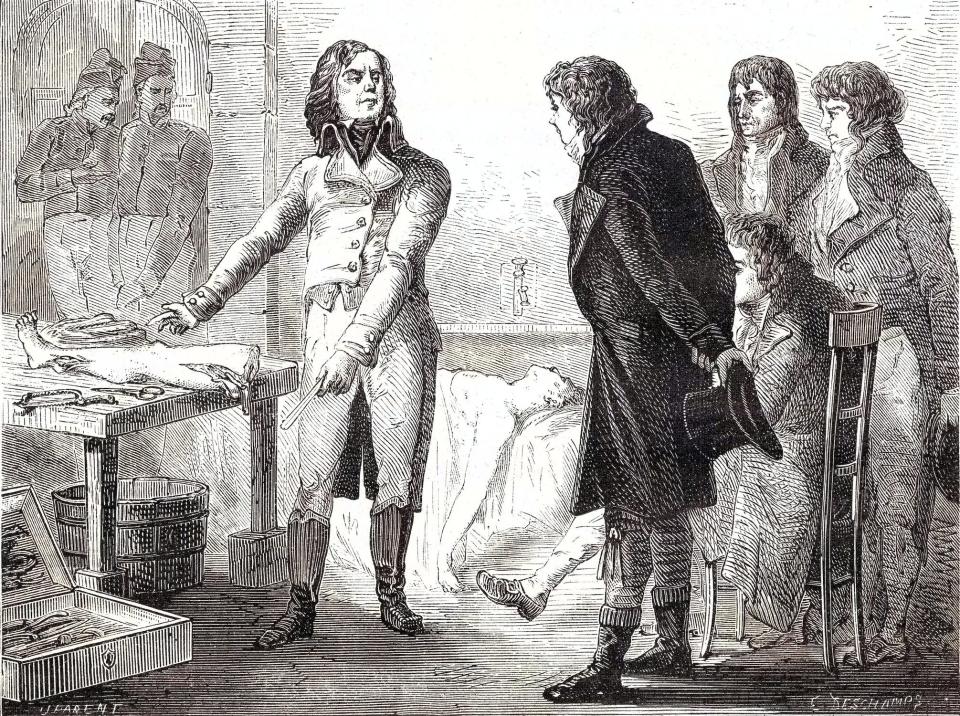-
In 1818, Mary Shelley published ‘Frankenstein; or, the modern Prometheus.”
-
In the novel, Frankenstein brings a creature to life with a “spark of being.”
-
Grotesque experiments with electricity and corpses may have inspired Shelley.
In the new movie “Lisa Frankenstein,” a teenage girl gives an animated corpse a makeover, complete with time in a tanning bed. It’s a modern twist on a 200-year-old story created by 18-year-old Mary Shelley.
In her 1818 novel, Shelley tells the story of Victor Frankenstein, who creates a creature from several human corpses and then brings it to life. Horrified, he abandons his creation, which (spoiler) then kills everyone Frankenstein loves.
Many film versions of the Frankenstein story, including the latest rendition debuting in U.S. theaters on Friday, use lightning or some other form of electricity to bring the creature to consciousness. Yet Shelley does not explicitly specify the agent of animation in her novel.
In 1816, when Shelley began writing the book, electricity was still somewhat mysterious. Many scholars were eager to study it and perhaps learn the secret of life itself.
The scientific atmosphere at home
In the months and years leading up to Shelley’s monumental novel, she was surrounded by some of the world’s leading scientific minds.
Mary Shelley’s father, novelist William Godwin, associated with several people with scientific backgrounds. Erasmus Darwin, Charles’ grandfather, and Humphry Davy – the discoverer of calcium, magnesium and other elements – were among them.
Both scientists influenced ‘Frankenstein’. Shelley included some of Davy’s writings in her novel, and the 1818 and 1831 prefaces both refer to Darwin.


Poet Percy Bysshe Shelley, whom Mary Shelley married the same year she began “Frankenstein,” was also fascinated by science. He went to anatomy lessonswrote a poem about hot air balloons and tried to clear up his sister’s skin condition with electricity.
In 1816, the soon-to-be married couple went on vacation at Lake Geneva. During this trip, poet Lord Byron and Percy Shelley discussed Erasmus Darwin’s experiments, galvanism (the idea that animals allow their own kind of electricity to flow through them) and whether a corpse could be reanimated.
Newly pregnant after the recent death of her daughter, Shelley had recently dreamed that she had brought her baby back to life by a warm fire.
With all these swirls, Byron challenged her and the other vacationers to write ghost stories. That was the beginning of what would soon become a literary classic.
The spark
On a rainy November evening, Frankenstein finally brings his creation – made from bones and organs stolen from corpses – to life.
“With a fear almost amounting to pain, I gathered the instruments of life around me so that I could pour a spark of being into the lifeless thing,” he explained.
Shelley was purposefully vague about the exact steps Frankenstein took to bring the body to life. “I will not lead you further, unguarded and ardent as I was then, to your destruction and unfailing misery,” Frankenstein tells the book’s narrator.
Some scholars have suggested that the ‘spark’ might be there firework or chemical in nature. Since Shelley had Frankenstein refuse to discuss the details, it’s impossible to know for sure.
Yet one passage from the first draft of the novel may foreshadow the “spark” that brought the creature to life.


In the novel, Frankenstein recalled his “extreme astonishment” after witnessing lightning split a tree. His father acted it out Benjamin Franklin‘S kite experiment connecting lightning and electricity. Frankenstein described it as sucking down “liquid from the clouds.”
In reality, Franklin and others believed that electricity was a liquid flows between objects. When Shelley published her novel, some of the most important discoveries about electricity by Michael Faraday and Georg Ohm were still ten years away.
“There was a lot of interest in the question: what is the essence that animates life?” historian Juliet Burba told Atlas Obscura in 2016. “Could it be electricity?”
The electrical experiments
In her 1831 revised edition of “Frankenstein,” Shelley removed the section on lightning and referred to galvanism instead.
Although galvanism has a different meaning today, its origins date back to a surgeon who believed he had discovered a new form of electricity.
In 1786, Luigi Galvani observed that a spark of electricity caused the dissected leg of a frog to vibrate. He believed he had just discovered “animal electricity,” a unique substance different from lightning or static electricity.
A few years later, Alessandro Volta argued that the frog merely acted as a conductor between two metals.


In the early 19th century, this debate led to some gruesome experiments conducted by Galvani’s cousin. Giovanni Aldini.
Aldini hooked an electric battery to a decapitated ox head. The eyes opened, the ears twitched, the tongue waved and the nostrils flared, he wrote. He then repeated the experiment with a horse, dogs, frogs and other animals.
In 1803, Aldini attached the battery to the corpse of Thomas Forster, who had been hanged by the authorities for murder. After noticing the various jerks and spasms, Aldini wrote that “vitality might perhaps have been restored, if many circumstances had not made this impossible.”
Some did miracle if such methods could revive someone who had suffocated or drowned.
Aldini’s experiments received a lot of attention at the time, and some scholars suggest that Shelley’s father may have even taken her to a demonstration.
Whether Shelley was directly inspired by Aldini or other galvanists, her novel makes clear her thoughts on attempts to control nature.
“Learn from me, if not by my precepts, at least by my example,” Frankenstein tells the narrator, “how dangerous is the acquisition of knowledge, and how much happier is the man who believes that his native city is the world, than he who strives to become greater than his nature allows.”
Read the original article on Business Insider